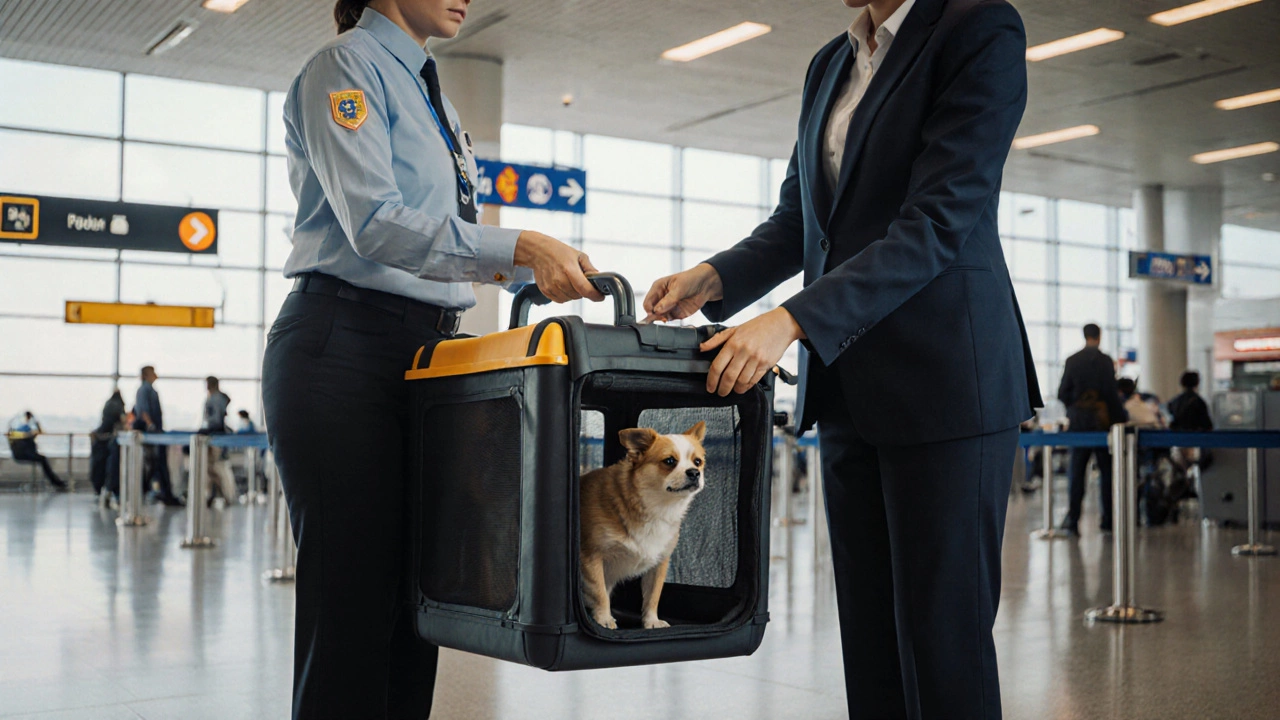Dog Carrier for Plane: What You Need to Know Before Flying
When you're planning a trip and want to bring your dog along, the dog carrier for plane, a secure, airline-approved container designed to safely transport dogs during flights. Also known as pet carrier, it's not just a box—it's your dog's safety zone in the sky. Not every carrier works. Airlines have strict rules on size, material, ventilation, and whether your dog can ride in the cabin or must go in cargo. If your pup is small enough, some airlines let them sit under the seat in a soft-sided carrier. But if they're bigger, you're looking at hard-sided crates and cargo hold rules that can be risky if you're not prepared.
There's a big difference between a dog carrier for plane, a secure, airline-approved container designed to safely transport dogs during flights. Also known as pet carrier, it's not just a box—it's your dog's safety zone in the sky. and a regular pet carrier you use for the vet. Airlines require carriers to meet IATA standards: rigid walls, secure latches, proper airflow, and enough room for your dog to stand, turn, and lie down. You can't just throw your dog in a backpack and call it good. And if you're thinking about putting your dog in cargo, know this: it’s not just about the carrier—it’s about temperature, delays, handling, and whether your dog has a clean bill of health. Some breeds, like bulldogs or pugs, are banned from cargo on many airlines because of breathing risks. Even if your dog is healthy, you’ll need a vet certificate and proof of up-to-date vaccines.
What about flying your dog in the cabin? That’s where things get tricky. Most airlines allow one small pet per passenger, but only if the carrier fits under the seat. Dimensions vary—some allow up to 18 x 14 x 8 inches, others are stricter. Soft carriers are popular because they’re flexible, but hard shells are required for cargo. And don’t assume your dog will be quiet. Airlines can deny boarding if your dog barks, whines, or seems stressed. That’s why training your dog to stay calm in the carrier weeks before the flight matters more than the brand you buy.
You’ll also need to check fees. Most airlines charge $100–$200 each way for in-cabin pets. Cargo is more expensive and often has extra handling charges. Some airlines, like Southwest, don’t allow cargo pets at all. Others, like Delta, have strict weight limits and seasonal restrictions. And forget about emotional support animals—those are no longer recognized by U.S. or UK airlines. Only service dogs have special rights, and even then, you need documentation.
Looking at the posts here, you’ll find real advice from people who’ve been through this. You’ll learn how to pick the right carrier size, what to pack for the trip, how to handle airport security with your dog, and why some dogs panic in cargo while others sleep through the flight. You’ll also see what airlines actually allow—no guesswork, no myths. Whether you’re flying across the UK or overseas, this collection gives you the facts you need to keep your dog safe, calm, and legally compliant. No fluff. Just what works.

Do Airlines Check Pet Carrier Size? What You Need to Know Before Flying
Airlines do check pet carrier size at the gate - and getting it wrong can mean missing your flight. Learn the exact size limits, how carriers are measured, and how to avoid costly mistakes when flying with your pet in 2025.
View more